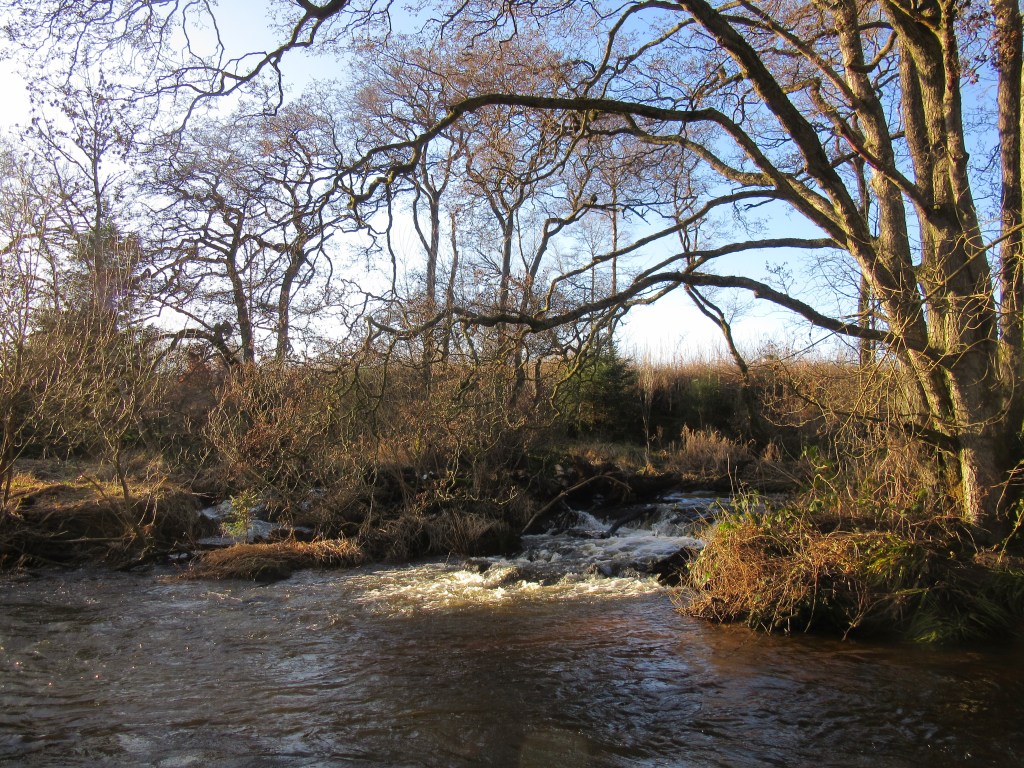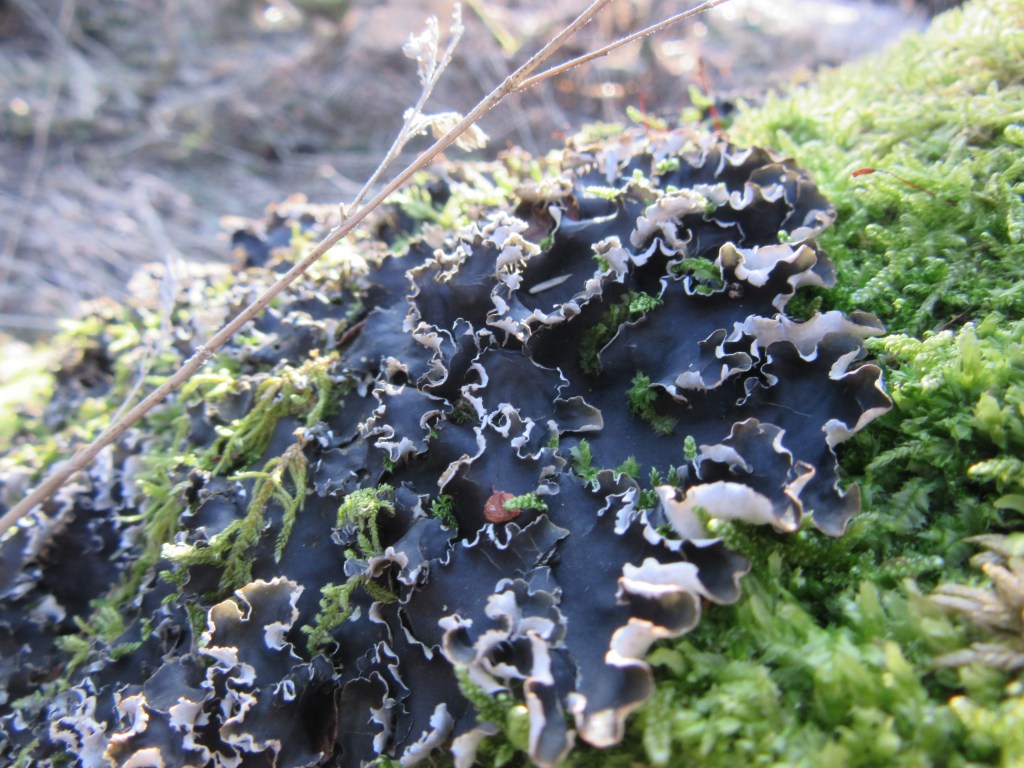
This is a place of intense beauty, the place where I expect to see a white-chested dipper scuttering along the edge of the burn when boulders have become submerged after days of rain. It is the place where I glimpsed that iridescent flash of blue and knew the trees heaving across the water are just the right habitat. It is the place to which I return in April to watch orange tips fly across the fen and to find the first peacocks bask on the dried reed sweet grass. This place, not far from my house, is where I take in and breathe out.
On a cold winter day the dampness of this wet woodland and fen gets to you as one carefully picks one’s way to the edge of the burn. I often stop beside the multitrunked alder with its cover of lichens like Evernia prunastri and Parmelia sulcata. In contrast to cyanolichens in which the fungus forms a symbiosis with a cyanobacterium, these chlorolichens thrive in locations that do perhaps not get as much rain, but are damp after all. Because of their photobiont being a green alga, they are able to absorb sufficient moisture from damp air to start photosynthesis.

Cyanolichens thrive better in areas where rain is a more persistent feature, not least the temperate rainforests on the west coast of Scotland. Cyanolichens also do well in areas that are frequently inundated such as boulders and rocks in streams. From the eastern bank where I stand it is hard to reach the rapids or boulders on the other bank, but a few hundred yards upstream others have found Collema flaccidum, a cyanolichen that requires a constantly damp substratum and thrives beside waterfalls.
Instead, the few boulders and roots of alder that are within reach from the eastern bank of Leuchar Burn are covered in aquatic mosses such as Brachythecium rivulare. Like lichens, mosses are poikilohydric, which means that they can stop and start their metabolism according to the amount of moisture they are able to absorb. When water levels recede after a dry spell, these mosses shrivel, but as soon as the levels rise again, the mosses will absorb the water and start photosynthesis again. And lichens and mosses respond in a similar manner to rain.

The trees along the water edge are like a thin necklace strung between burn and fen. In winter the reed sweetgrass in the fen has succumbed to the ground, forming a thick layer of rotting plant material. Lichens are unable to live beneath. This mat is simply too thick and blocks out the light they need to photosynthesise. In shaded and damp habitats mosses often seem to have a competitive edge over lichens. In the area of fen where peacocks tend to warm in the sun, there are a few openings in the vegetation where, rather opportunistically, the moss Thuidium tamariscinum has plugged the gap. Its upward-reaching habit allows it to come level with the dead vegetation, and so it creates a level playing field when it comes to competition for light.

A sprawling willow with thick boughs marks the edge of the fen. On one of the younger branches there is a vivid patch of the lichen Platismatia glauca alongside some crisped cushions of the moss Ulota bruchii. The older branches and leaning trunk are covered in a thick layer of weft-forming mosses such as Hypnum cupressiforme. This trunk is crowned with a large patch of the lichen Peltigera hymenina. I have another look and realise how, despite having seen lichens and mosses swell and shrivel when they get wet and dry out again, I often lazily assume the lichens and mosses growing on a tree to just be there, and to still be there when I return. But on this trunk, Peltigera hymenina is fighting it out with Hypnum cupressiforme. The large thalli of the Peltigera species lie pressed against the trunk, blocking out any sunlight for the moss. Yet, wherever there is a gap between thalli, stems of the Hypnum species shoot up and across the lichen thalli. This is competition unfolding. I take in and breathe out. When I return a year from now, the score between the lichen and moss may well have changed.
Culter Burn is designated a Local Nature Conservation Site for its long-established woodland with a rich ground flora, and its reedbeds, marsh and willow scrub.
Sources
Baron, G., 1999. Understanding lichens. Richmond Publishing, Slough, England.
Gilbert, O., 2000. Lichens. HarperCollinsPublishers, London.
Porley, R. and N. Hodgetts, 2005. Mosses & Liverworts. HarperCollinsPublishers, London.
Copyright text and images Petra Vergunst
2 thoughts on “Not far from my house”